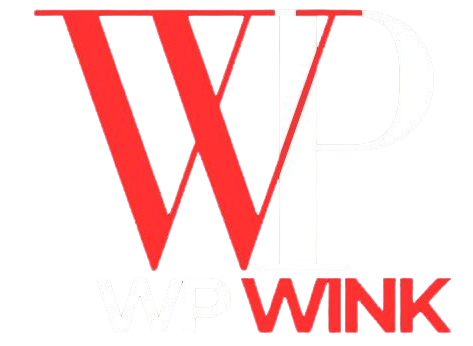I. Introduction
In today’s digital-first world, e-commerce web development is crucial for businesses seeking to establish or expand their online presence. It involves creating feature-rich websites that allow seamless transactions and offer a superior user experience. Among the many platforms available, WordPress stands out as a versatile and highly customizable option for developing e-commerce websites. Leveraging WordPress can help businesses build dynamic and successful online stores. This blog explores why WordPress is an excellent choice for e-commerce development and offers insights into setting up and optimizing an e-commerce website on the platform.
I. Why Choose WordPress for E-commerce Development
A. Flexibility and Customization Options
WordPress is renowned for its flexibility as a content management system (CMS). Unlike closed systems that restrict the scope of your website, WordPress offers limitless customization options that allow you to tailor your online store to meet specific business needs. Whether you want to adjust your website’s layout, add new features, or create custom workflows, WordPress enables you to do so with ease. This makes it ideal for businesses of any size, from startups to large-scale enterprises looking for a unique e-commerce solution.
B. Wide Range of E-commerce Plugins
One of WordPress’s major strengths lies in its extensive plugin ecosystem. When it comes to e-commerce, WordPress has plugins that can transform a basic website into a fully functional online store. Popular options include WooCommerce and Easy Digital Downloads, which provide essential tools for managing products, orders, payments, and more. These plugins extend the functionality of WordPress, allowing you to build a robust e-commerce platform without needing to start from scratch. From physical products to digital downloads, these plugins make scaling your business more manageable.
C. Strong Community Support
The WordPress community is vast and active, which means that resources for troubleshooting, customization, and optimization are always at your fingertips. Forums, user guides, and extensive documentation make it easy to find solutions to common problems. This strong community support ensures that developers and business owners are never left in the dark when facing technical challenges, adding to the overall appeal of using WordPress for e-commerce development.
II. Setting Up and Configuring an E-commerce Website with WordPress
A. Choosing the Right Theme
The theme you select for your e-commerce website can significantly impact its performance and appeal. It’s essential to choose a theme optimized for e-commerce, one that is responsive and visually engaging to ensure your online store works seamlessly across all devices. Look for themes that are specifically built for e-commerce or are WooCommerce compatible, providing a cohesive user experience for your customers.
B. Installing and Configuring E-commerce Plugins
Once you have chosen the theme, installing and configuring the right e-commerce plugin is the next step. WooCommerce, for instance, offers an easy-to-follow installation process. Simply navigate to the plugin directory in WordPress, search for WooCommerce, and install it. Once activated, you’ll be guided through an initial setup that covers payment gateways, shipping options, and product settings, allowing you to start selling right away.
C. Customizing the Website Design
Branding and visual appeal play a significant role in the success of an e-commerce website. WordPress allows you to customize the design of your website to reflect your brand’s personality. Using themes, page builders like Elementor, and additional design plugins, you can craft a professional and appealing storefront that attracts customers and encourages sales.
III. Building the Core Features of Your E-commerce Website
A. Product Display and Catalog Management
A well-organized product catalog is essential for a successful e-commerce store. WordPress allows you to create and manage product categories, tags, and attributes, ensuring easy navigation for users. Utilizing filtering options and creating descriptive product pages with high-quality images and details will improve user experience and increase conversion rates.
B. Shopping Cart and Checkout Process
Designing a user-friendly shopping cart system is crucial for retaining customers. WordPress allows you to optimize the checkout process by offering options for guest checkouts, secure payments, and a streamlined design. A frictionless experience during the checkout phase can significantly reduce cart abandonment and improve sales.
C. Payment Gateway Integration
WordPress supports a wide variety of payment gateways, including PayPal, Stripe, and Authorize.net, making it easy to integrate secure payment methods. With a step-by-step setup process, you can configure your payment gateways, ensuring that transactions are processed smoothly and securely.
IV. Enhancing the Functionality of Your E-commerce Website
A. Extending E-commerce Features with Plugins
Beyond the basics, WordPress offers plugins that enhance the functionality of your e-commerce website. Plugins for advanced product search, customer reviews, discount codes, and promotions can greatly improve the user experience and drive sales. However, it’s important to ensure that these plugins are compatible with your existing setup to maintain optimal performance.
B. Inventory Management and Order Fulfillment
Effective inventory management is critical to keeping your store running smoothly. WordPress provides plugins that help track stock levels, manage orders, and automate fulfillment. By integrating tools like WooCommerce Inventory Management or third-party platforms, you can keep your operations efficient and error-free.
C. Advanced Shipping Options
Offering flexible shipping options can enhance your customer experience. WordPress allows you to set up various shipping methods and calculate costs based on location, weight, or volume. Integrating shipping plugins or third-party logistics services can help automate this process, ensuring timely and accurate deliveries.
V. Securing and Optimizing Your E-commerce Website
A. Implementing Security Measures
E-commerce websites are prime targets for cyber-attacks, so securing your WordPress site is paramount. Implement best practices such as using SSL certificates for encrypted transactions, regular backups, and trusted security plugins like Wordfence or Sucuri. By safeguarding your website, you ensure that customer data remains secure, boosting trust in your brand.
B. Performance Optimization
Website speed and performance are crucial in e-commerce. WordPress offers several ways to optimize site performance, including caching plugins like W3 Total Cache, image optimization tools like Smush, and content delivery networks (CDNs) for faster loading times. An optimized website will improve user experience and positively impact your search engine rankings.
C. Search Engine Optimization (SEO)
SEO is essential for driving traffic to your e-commerce store. WordPress makes it easy to optimize your site using plugins like Yoast SEO, which guide you through keyword optimization, meta tag creation, and content structuring. By adhering to SEO best practices, your store will rank higher on search engine results pages, increasing visibility and attracting more customers.
V. Conclusion
WordPress offers immense flexibility and power for building successful e-commerce websites. With its wide range of plugins, customization options, and a supportive community, WordPress provides all the tools necessary to create a unique and fully functional online store. Compared to platforms like Shopify, WordPress offers more freedom and cost-effective scalability, making it the better choice for businesses that want to grow without constraints. While Shopify may be easy to use, its limited customization options and recurring costs can be restrictive for businesses looking for a long-term, robust solution. In contrast, WordPress provides the ultimate combination of flexibility, performance, and value, empowering you to create an online store that drives success.


สล็อตเว็บตรงฝาก-ถอน true wallet ไม่มีขั้นต่ํา
Awesome article.
user_wpwick2024
Thanks for your comment!
ufa1688 เข้าสู่ระบบ
I’m curious to find out what blog system you happen to be utilizing?
I’m having some minor security problems with my latest site and I would like to find something more safeguarded.
Do you have any suggestions?
user_wpwick2024
Thank you for reaching out! We’re using WordPress as the blog system, which offers great flexibility and security when properly configured. If you’re facing security issues, I recommend using reputable security plugins like Wordfence or Sucuri and keeping your themes and plugins updated. If you need any assistance or guidance on securing your site, we’d be happy to help!
สล็อต 99
My brother suggested I might like this blog. He
was entirely right. This post actually made my day.
You can not imagine just how much time I had spent for this information! Thanks!
ktv789สล็อต
Have you ever considered about adding a little bit more than just your
articles? I mean, what you say is important and all. Nevertheless think of if you added some great pictures
or videos to give your posts more, “pop”! Your content is excellent but with pics and videos, this blog could certainly be one of the very best in its niche.
Fantastic blog!
space 789 สล็อต
Howdy I am so excited I found your web site, I really found you by accident, while I was browsing on Digg for
something else, Nonetheless I am here now and would just like to
say thanks for a tremendous post and a all round entertaining blog (I also love
the theme/design), I don’t have time to read it all at the minute but I have bookmarked it and also
added in your RSS feeds, so when I have time I will be
back to read much more, Please do keep up the superb work.
formula1688
Very good article! We will be linking to this great article on our site.
Keep up the great writing.
user_wpwick2024
Thanks for your comment!
หนังโปัไทย
You actually make it seem so easy with your presentation but I find this matter to be actually something which I think I would never understand.
It seems too complicated and extremely broad for me. I am looking forward for your next post, I will try to get the hang
of it!
หนังโปีไทย
Hi my loved one! I wish to say that this article is amazing, nice written and come with approximately all important infos.
I’d like to see more posts like this .
หนังโป๊ญี่ปุ่นภาคไทย
I think this is among the most vital information for me.
And i am glad reading your article. But wanna remark on some general things,
The web site style is great, the articles is really great
: D. Good job, cheers
หนังเอวี18+
Howdy! Do you know if they make any plugins to help with SEO?
I’m trying to get my blog to rank for some targeted keywords but I’m not seeing very
good success. If you know of any please share.
Many thanks!
ดูดควยเพื่อน
Very shortly this web site will be famous among all blog viewers, due to it’s good content
Borja Aranda Vaquero
Gracias por el contenido. Me surge una pregunta: ¿cómo aplicarías esto en situaciones cotidianas?